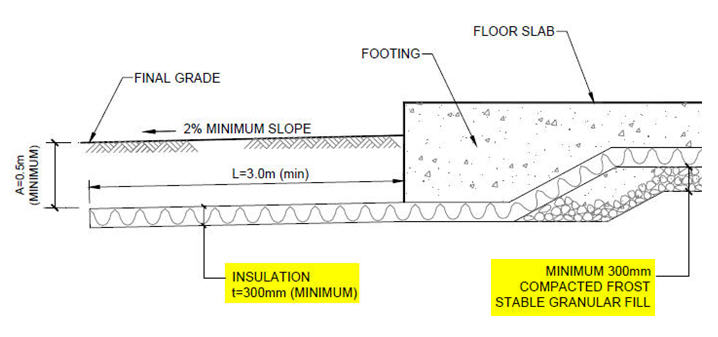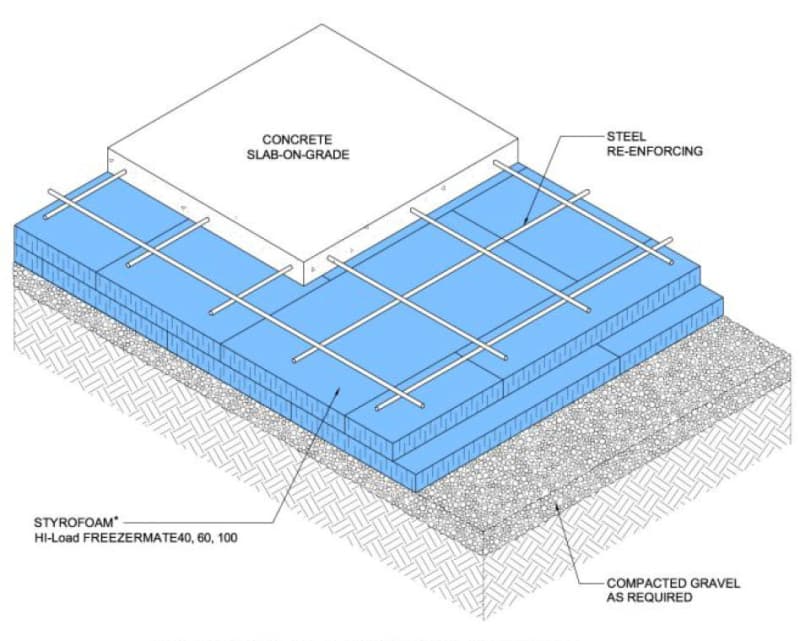FROST HEAVE:
If you do consider a slab on non frost susceptible fill down to frost depth, be careful what sort of fill you specify. If your native soil has low permeability, and you go in with an open graded, free draining fill, be careful that you don't create a "bathtub" for water to collect under your foundation. Choosing CLSM as your fill down to frost depth would be one option to mitigate this possibility.
If you do go with an open graded fill, consider wrapping in a nonwoven geotextile fabric lest the voids in that open graded material fill with undesirable material
Below are several resources that might be helpful for the problem at hand:
Report on frost susceptible soils (Figure 3 provides a good summary):
Report on the viability of CLSM (flowable fill) as frost resistant fill:
Others have provided info on insulated foundations as a means to prevent frost heave. Below are some additional resources that speak more to that concept that you might find useful:
ASCE 32-01 - Design and Construction of Frost-Protected Shallow Foundations
ROTATING MACHINERY FOUNDATION DESIGN:
If this is indeed a heavy piece of rotating machinery, be careful how you are designing your foundation to resist vibration. A full dynamic analysis should be performed to ensure that resonant frequencies of the machine + foundation are outside the acting frequency range. From the natural gas turbine compressor design world, the following rules of thumb are good starting points (but are not a substitute for vibration analysis):
-Foundation / machine weight ratio > 3
-Length / Width ratio of foundation < 5
-Thickness of support block > 2'
-Width of foundation / Height to centerline of rotating shaft > 1
-Eccentricity of foundation center of gravity to machine center of gravity < 5%
Resources:
Look for articles / books by Arya and Pincus. There may be some available online.


